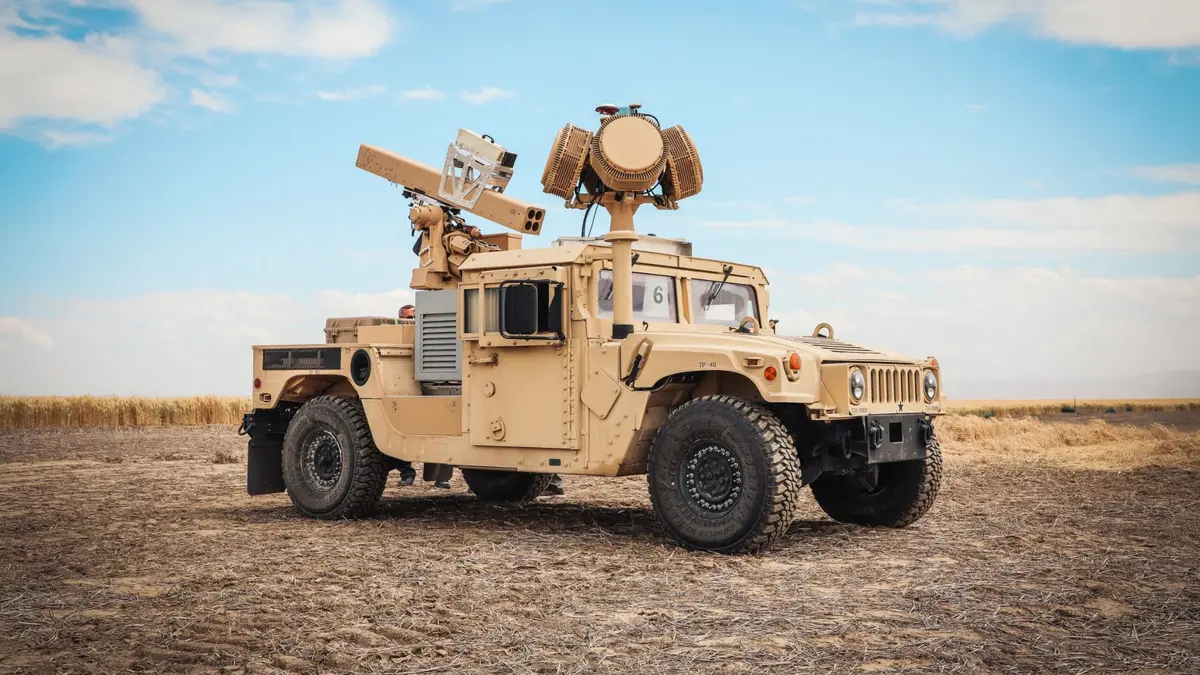The US Army has received the six MSI Defense Solutions’ (MSI) Electronic Advanced Ground Launcher Systems (EAGLS) to improve its counter-drone capabilities.
In April, the US Army’s Naval Air Systems Command (NAVAIR) announced the order for a firm-fixed-price contract with MSI with a not-to-exceed value of $24,186,464.
The contract demanded the delivery of six EAGLS to fight off drones in the Middle East.
The order was seen as an emergency response to provide much-needed counter-drone systems to protect US assets in the region.
Adaptable, cost-effective
As the global unmanned aerial system (UAS) threat expands in quantity and complexity, personnel and asset protection demand more agile, mobile, and effective solutions.
The EAGLS Counter-UAS system provides an adaptable, cost-effective, mobile, or stationary system that can be employed in various environments and on multiple platform types.
MSI’s EAGLS C-UAS system is a platform that can accommodate both mobile and stationary integrations to protect critical infrastructure such as power, water, and information systems/data centers.
It can also protect any target on the move, repositioning from one location to another, and enable shoot and scoot capability.
Featuring a remote weapon station, MHR radar, electro-optical sensor, and a 70mm laser rocket launcher, UAS targets are quickly detected at a safe distance, recognized and identified, and prosecuted by the forces.
70mm rockets
Similar to L3Harris’ Vehicle-Agnostic Modular Palletized ISR Rocket Equipment (VAMPIRE) system, EAGLS features laser-guided 70mm rockets to kill drones at a safe distance.
EAGLS is a complete system with three main components. These include a version of the Commonly Remotely Operated Weapon Station II (CROWS II) equipped with a four-round 70mm rocket launcher loaded with laser-guided Advanced Precision Kill Weapon System II (APKWS II) rockets, a sensor turret with electro-optical and infrared cameras, and a small radar array.
The weapon station uses laser-guided rockets such as the Advanced Precision Kill Weapon System II with a range of 10 kilometers (6 miles), identical to the RPS-40 radar’s detection range.
MSI’s website shows a version installed on a pickup truck-style variant of the 4×4 Humvee light utility vehicle.
The United States Navy recently released a document called Justification and Approval, which stated that an urgent contract action is required to address the emerging and persistent threats posed by UAS in the United States Central Command (USCENTCOM) Area of Responsibility (AOR).
According to the J&A document, “Immediate contract award is critical due to the urgent need for ongoing operations in the USCENTCOM AOR. “If the immediate procurement is not made, U.S. Forces will not receive the necessary critical C-UAS systems as required for capability in theater,” it adds.
The urgency has yet to be made public, but it is clear that US higher-ups are concerned about the lack of counter-drone systems to defend US assets in the Middle East.
This is likely a fear that has only increased given the Islamic Republic of Iran’s threats to attack US bases around the region following its assistance to Israel.
Whatever the case, purchasing the new EAGLSs highlights the need for increased counter-drone capabilities for US forces in the Middle East.
NEWSLETTER
The Blueprint Daily
Stay up-to-date on engineering, tech, space, and science news with The Blueprint.
By clicking sign up, you confirm that you accept this site's Terms of Use and Privacy Policy
ABOUT THE EDITOR
Kapil Kajal Kapil Kajal is an award-winning journalist with a diverse portfolio spanning defense, politics, technology, crime, environment, human rights, and foreign policy. His work has been featured in publications such as Janes, National Geographic, Al Jazeera, Rest of World, Mongabay, and Nikkei. Kapil holds a dual bachelor's degree in Electrical, Electronics, and Communication Engineering and a master’s diploma in journalism from the Institute of Journalism and New Media in Bangalore.






0